Balkinization
an unanticipated consequence of
Jack M. Balkin
Balkinization Symposiums: A Continuing List
E-mail:
Jack Balkin:
jackbalkin at yahoo.com
Bruce Ackerman
bruce.ackerman at yale.edu
Ian Ayres
ian.ayres at yale.edu
Corey Brettschneider
corey_brettschneider at brown.edu
Mary Dudziak
mary.l.dudziak at emory.edu
Joey Fishkin
joey.fishkin at gmail.com
Heather Gerken heather.gerken at yale.edu
Abbe Gluck abbe.gluck at yale.edu
Mark Graber
mgraber at law.umaryland.edu
Stephen Griffin
sgriffin at tulane.edu
Jonathan Hafetz
jonathan.hafetz at shu.edu
Jeremy Kessler
jkessler at law.columbia.edu
Andrew Koppelman
akoppelman at law.northwestern.edu
Marty Lederman
msl46 at law.georgetown.edu
Sanford Levinson
slevinson at law.utexas.edu
David Luban
david.luban at gmail.com
Gerard Magliocca
gmaglioc at iupui.edu
Jason Mazzone
mazzonej at illinois.edu
Linda McClain
lmcclain at bu.edu
John Mikhail
mikhail at law.georgetown.edu
Frank Pasquale
pasquale.frank at gmail.com
Nate Persily
npersily at gmail.com
Michael Stokes Paulsen
michaelstokespaulsen at gmail.com
Deborah Pearlstein
dpearlst at yu.edu
Rick Pildes
rick.pildes at nyu.edu
David Pozen
dpozen at law.columbia.edu
Richard Primus
raprimus at umich.edu
K. Sabeel Rahmansabeel.rahman at brooklaw.edu
Alice Ristroph
alice.ristroph at shu.edu
Neil Siegel
siegel at law.duke.edu
David Super
david.super at law.georgetown.edu
Brian Tamanaha
btamanaha at wulaw.wustl.edu
Nelson Tebbe
nelson.tebbe at brooklaw.edu
Mark Tushnet
mtushnet at law.harvard.edu
Adam Winkler
winkler at ucla.edu
Compendium of posts on Hobby Lobby and related cases
The Anti-Torture Memos: Balkinization Posts on Torture, Interrogation, Detention, War Powers, and OLC
The Anti-Torture Memos (arranged by topic)
Recent Posts
The Deep English Roots of Using the Custom and Tradition of Governmental Practice as a Source of Legal Meaning for Interpreting Written Constitutional Texts, or, A Lesson for Originalists Too
Just A Few Blogs
ACS Blog
Alas, a Blog
Althouse
Arts and Letters Daily
Atrios (Eschaton)
Bill of Health
Buzzflash.com
Buzz Machine
Cato at Liberty
Juan Cole (Informed Comment)
Concurring Opinions
The Constitution in 2020
Corrente
Crooked Timber
Daily Howler
Daily Kos
Dana Boyd
Brad DeLong
Digby (Hullabaloo)
Discriminations
Daniel Drezner
Kevin Drum (Mother Jones)
Electrolite
En Banc
Eunomia (Daniel Larison)
Fafblog
Michael Froomkin (Discourse.net)
GovLab (Beth Noveck)
Rick Hasen (Election Law)
History News Network
How Appealing
Ignatz (Sam Heldman)
The Importance of (Ernie Miller)
Infolaw
Instapundit
International Economic Law and Policy Blog
IntLawGrrls
Jacob Levy
Jesus' General
Jurisdynamics
The Kitchen Cabinet
Mark Kleiman
Law Blog Central
Larry Lessig
Lawyers, Guns and Money
Liberal Oasis
Brian Leiter's Law School Reports
The Leiter Reports
Marginal Revolution
Megan McArdle
Memeorandum
Metafilter
Mirror of Justice
The New Republic
Newseum
No More Mister Nice Blog
Brendan Nyhan
Opinio Juris
Orcinus
The Originalism Blog
Pandagon
Passport (Foreign Policy)
Overcoming Bias
Political Animal (Washington Monthly)
Political Theory Daily Review
Political Wire (Taegan Goddard)
The Poor Man
Virginia Postrel
Prawfsblawg
Public Reason
Jonathan Rauch
Raw Story
Redstate
ReligiousLeftLaw.com
Reporters Committee For Freedom of the Press
Reproductive Rights Blog
Rothman's Roadmap to the Right of Publicity
SCOTUS Blog
Seeing the Forest
Clay Shirky
The Shifted Librarian
The Situationist
Larry Solum (Legal Theory)
Andrew Sullivan
Talking Points Memo
Talk Left
Tapped
Tbogg
TechPresident
The Paper Chase (Jurist)
Tom Paine
Tom Tomorrow (This Modern World)
Eve Tushnet
Uggabugga
University of Chicago Law School Faculty Blog
Unqualified Offerings
The Volokh Conspiracy
War and Piece (Laura Rozen)
Wampum
Oliver Willis
Wonkette
Written Description
Matthew Yglesias
Yin
Your Choice of Feeds
1. XML
powered by
2. Atom Feed
3. RSS 2.0
Wednesday, January 22, 2025
The Deep English Roots of Using the Custom and Tradition of Governmental Practice as a Source of Legal Meaning for Interpreting Written Constitutional Texts, or, A Lesson for Originalists Too
Guest Blogger
For the Balkinization Symposium on Curtis A. Bradley, Historical Gloss and Foreign Affairs: Constitutional Authority in Practice (Harvard University Press, 2024). Julian Davis Mortenson
With its
publication, Curt Bradley’s Historical Gloss and Foreign Affairs becomes
the standard reference on the historical role of custom and tradition in defining
the President’s relationship with Congress and with the law of the land. Debates about
those relationships have long been vexed, particularly on questions of national
security and foreign affairs. The text of the Constitution does not say much
about presidential power. Nor, because of jurisdictional and prudential limitations,
have the courts been in a good position to generate a more particularized body
of judicial precedent on these questions over time. These background
conditions, Bradley argues, have required custom and tradition to take on load-bearing
duty as a source of legal meaning on the separation of powers. From there, he
charts the consistency with which American constitutional law has reflected this
reality across a wide array of controversies in foreign affairs. Bradley’s book
is thoroughly persuasive on both counts. Also cogent is his insistence on the
need for scrupulous care when analyzing custom and tradition, the complexities of
which are often, well, glossed over. On this score, Bradley’s critique of Zivotofsky v. Clinton
is characteristically precise. In that case, the Supreme Court held that the
President has an exclusive constitutional power to recognize foreign states. As
Bradley deftly explains, however, the court’s analysis of evidence from custom
and tradition rested on a category error. The majority collected numerous
examples of presidents recognizing foreign governments. But none involved a
legal structure like the one presented in Zivotofsky—i.e., Youngtown
Zone 3 presidential action that defied a duly enacted statute. The majority’s
evidence, Bradley observes, may well support an inherent presidential authority
to recognize foreign states in the face of legislative silence—i.e., in Youngstown
Zone 2. But the issue actually presented by the case was completely different. Bradley
is entirely right to call for higher analytical standards than this. More generally,
the book succeeds comprehensively in its effort to establish the long
historical pedigree—from the moment the U.S. Constitution was ratified—of using
custom and tradition as an interpretive “gloss” for its text. The balance of
this post will build on and extend that point. Because in fact,
the pedigree of this approach can be traced far back into English history, long
before any of the first North American constitutions came into being. As
scholars from William Blackstone and A.V. Dicey to Mary Bilder and Jonathan
Gienapp have detailed, English lawyers and parliamentarians regularly debated custom
and tradition as a source of constitutional meaning. While Bradley makes brief reference
to that background, he is tentative about drawing a tight connection to American
interpretive practice, because the English practice of debating political
precedents is often described in the context of common law reasoning about an unwritten
constitution (14). I would shed
this caution. The use of custom and tradition as a source of legal meaning in
English constitutional practice was not limited to unwritten constitutional
norms or common law style reasoning. To the contrary, arguments about previous political
practice were regularly deployed as a “gloss” when interpreting written
legislative instruments—including quintessentially constitutional ones like
Magna Charta, the 1628 Petition of Right, the 1689 Bill of Rights, and the 1701
Act of Settlement. This means that the American practice of glossing
constitutional text with a close, legalistic analysis of political precedents followed
a well-grooved path from the very first days of the republic. Consider the
debates at Westminster and Whitehall about two famous constitutional
controversies in the late eighteenth century. Both episodes pressed on the
basic structure of the English constitution. Both episodes turned on the
interpretation of textual enactments. And in both episodes, the legal substance
of the debates drilled down in persistent detail on exactly the kind of
scrupulous parsing of political practices as an interpretive guide to textual
enactments that Bradley’s book charts in the United States. In 1766, the
Crown responded to crop failures throughout Europe by prohibiting the export of
British wheat. Because this embargo violated three statutes, it was defended as
an exercise of the King’s prerogative power to suspend the laws. The problem
for the Crown was that the 1689 Bill of Rights—a statute enacted during the
Glorious Revolution and universally understood as a pillar of the English
constitution—provided that “the pretended power of suspending of the laws, or
the execution of laws, by regal authority, without consent of parliament, is
illegal.” The meaning of this text was at the heart of a fiery debate. And a
persistent focal point of that debate was a close parsing of earlier decisions by
the Crown and Parliament to decide whether they supported the Crown’s reading
of the Bill of Rights in 1776. What exactly was the Crown’s explanation for not
imposing an embargo in 1709 and 1756? Were the challenges of those years comparably
urgent? How about the intermittent royal prohibitions on exporting gunpowder—had
that been with the “consent of parliament,” express or otherwise? The
discussion would be at home in any chapter of Bradley’s book. The same
dynamic was reported across the pages of American newspapers in 1775, when the
Crown’s movement of German troops into the British possession of Gibraltar
prompted another constitutional uproar. Once again, one of the core legal
difficulties in the public and parliamentary debates involved the text of the 1689
Bill of Rights, which provided that “the raising or keeping a standing army
within the kingdom in time of peace, unless it be with consent of Parliament,
is against law.” Here too, alongside wide-ranging debates about the letter and
spirit of that legislative enactment, parliamentarians and pamphleteers launched
into minute analysis of what earlier English monarchs had done, and how earlier
English parliaments had responded. How had Parliament explained its rejection
of William III’s request to keep his Dutch guard in London? How had historical
contestation over the classification of English possessions like Calais, Dunkirk,
and Tangier been resolved? What to make of the protest lodged against George
II’s use of Hanoverian troops in 1742? And so on—again, with precisely the kind
of legalized detail and scrupulous attention to the institutional context of
each earlier episode that Bradley calls for in modern American cases like Zivotofsky. In the
Anglo-American legal tradition that was the interpretive backdrop for the U.S. Constitution,
the detailed and legalistic parsing of political precedents as a “gloss” on the
meaning of constitutional texts was just how you ran the railroad. Emphasizing
this point is especially important at a moment where originalism has become so
influential in both the courts and the other political branches of government. If
the interpretive convention Bradley describes was already an ordinary practice
at the Founding—and it was—then it would seem historical gloss ought to be a
constitutive element of constitutional meaning even for originalists. Not as a flash-freeze
version of liquidation that would cease to operate soon after ratification,
as some originalists have suggested, but as an ongoing living
process that would continue as long as the document did. And that means the
tradition Bradley charts stands on even broader jurisprudential footing than his
already wide-ranging and authoritative account has space to document.
Posted
9:30 AM
by Guest Blogger [link]
Books by Balkinization Bloggers

Gerard N. Magliocca, The Actual Art of Governing: Justice Robert H. Jackson's Concurring Opinion in the Steel Seizure Case (Oxford University Press, 2025)

Linda C. McClain and Aziza Ahmed, The Routledge Companion to Gender and COVID-19 (Routledge, 2024)

David Pozen, The Constitution of the War on Drugs (Oxford University Press, 2024)

Jack M. Balkin, Memory and Authority: The Uses of History in Constitutional Interpretation (Yale University Press, 2024)
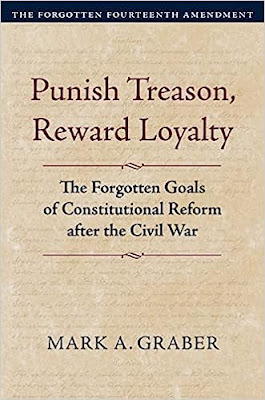
Mark A. Graber, Punish Treason, Reward Loyalty: The Forgotten Goals of Constitutional Reform after the Civil War (University of Kansas Press, 2023)
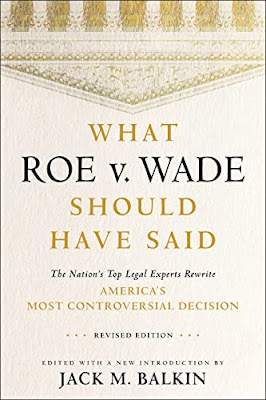
Jack M. Balkin, What Roe v. Wade Should Have Said: The Nation's Top Legal Experts Rewrite America's Most Controversial Decision - Revised Edition (NYU Press, 2023)

Andrew Koppelman, Burning Down the House: How Libertarian Philosophy Was Corrupted by Delusion and Greed (St. Martin’s Press, 2022)

Gerard N. Magliocca, Washington's Heir: The Life of Justice Bushrod Washington (Oxford University Press, 2022)
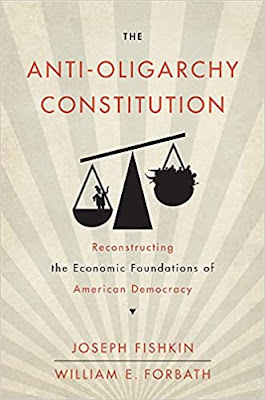
Joseph Fishkin and William E. Forbath, The Anti-Oligarchy Constitution: Reconstructing the Economic Foundations of American Democracy (Harvard University Press, 2022)

Mark Tushnet and Bojan Bugaric, Power to the People: Constitutionalism in the Age of Populism (Oxford University Press 2021).

Mark Philip Bradley and Mary L. Dudziak, eds., Making the Forever War: Marilyn B. Young on the Culture and Politics of American Militarism Culture and Politics in the Cold War and Beyond (University of Massachusetts Press, 2021).

Jack M. Balkin, What Obergefell v. Hodges Should Have Said: The Nation's Top Legal Experts Rewrite America's Same-Sex Marriage Decision (Yale University Press, 2020)

Frank Pasquale, New Laws of Robotics: Defending Human Expertise in the Age of AI (Belknap Press, 2020)

Jack M. Balkin, The Cycles of Constitutional Time (Oxford University Press, 2020)

Mark Tushnet, Taking Back the Constitution: Activist Judges and the Next Age of American Law (Yale University Press 2020).

Andrew Koppelman, Gay Rights vs. Religious Liberty?: The Unnecessary Conflict (Oxford University Press, 2020)

Ezekiel J Emanuel and Abbe R. Gluck, The Trillion Dollar Revolution: How the Affordable Care Act Transformed Politics, Law, and Health Care in America (PublicAffairs, 2020)

Linda C. McClain, Who's the Bigot?: Learning from Conflicts over Marriage and Civil Rights Law (Oxford University Press, 2020)
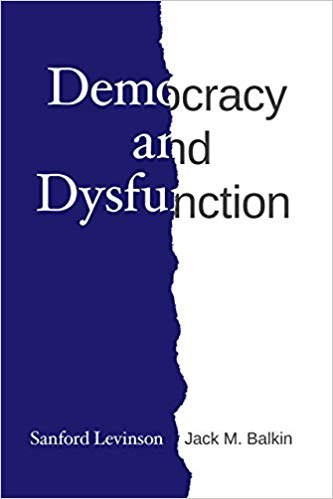
Sanford Levinson and Jack M. Balkin, Democracy and Dysfunction (University of Chicago Press, 2019)

Sanford Levinson, Written in Stone: Public Monuments in Changing Societies (Duke University Press 2018)

Mark A. Graber, Sanford Levinson, and Mark Tushnet, eds., Constitutional Democracy in Crisis? (Oxford University Press 2018)

Gerard Magliocca, The Heart of the Constitution: How the Bill of Rights became the Bill of Rights (Oxford University Press, 2018)

Cynthia Levinson and Sanford Levinson, Fault Lines in the Constitution: The Framers, Their Fights, and the Flaws that Affect Us Today (Peachtree Publishers, 2017)

Brian Z. Tamanaha, A Realistic Theory of Law (Cambridge University Press 2017)

Sanford Levinson, Nullification and Secession in Modern Constitutional Thought (University Press of Kansas 2016)

Sanford Levinson, An Argument Open to All: Reading The Federalist in the 21st Century (Yale University Press 2015)

Stephen M. Griffin, Broken Trust: Dysfunctional Government and Constitutional Reform (University Press of Kansas, 2015)

Frank Pasquale, The Black Box Society: The Secret Algorithms That Control Money and Information (Harvard University Press, 2015)

Bruce Ackerman, We the People, Volume 3: The Civil Rights Revolution (Harvard University Press, 2014)
Balkinization Symposium on We the People, Volume 3: The Civil Rights Revolution

Joseph Fishkin, Bottlenecks: A New Theory of Equal Opportunity (Oxford University Press, 2014)

Mark A. Graber, A New Introduction to American Constitutionalism (Oxford University Press, 2013)

John Mikhail, Elements of Moral Cognition: Rawls' Linguistic Analogy and the Cognitive Science of Moral and Legal Judgment (Cambridge University Press, 2013)

Gerard N. Magliocca, American Founding Son: John Bingham and the Invention of the Fourteenth Amendment (New York University Press, 2013)

Stephen M. Griffin, Long Wars and the Constitution (Harvard University Press, 2013)

Andrew Koppelman, The Tough Luck Constitution and the Assault on Health Care Reform (Oxford University Press, 2013)

James E. Fleming and Linda C. McClain, Ordered Liberty: Rights, Responsibilities, and Virtues (Harvard University Press, 2013)
Balkinization Symposium on Ordered Liberty: Rights, Responsibilities, and Virtues

Andrew Koppelman, Defending American Religious Neutrality (Harvard University Press, 2013)

Brian Z. Tamanaha, Failing Law Schools (University of Chicago Press, 2012)

Sanford Levinson, Framed: America's 51 Constitutions and the Crisis of Governance (Oxford University Press, 2012)

Linda C. McClain and Joanna L. Grossman, Gender Equality: Dimensions of Women's Equal Citizenship (Cambridge University Press, 2012)

Mary Dudziak, War Time: An Idea, Its History, Its Consequences (Oxford University Press, 2012)

Jack M. Balkin, Living Originalism (Harvard University Press, 2011)

Jason Mazzone, Copyfraud and Other Abuses of Intellectual Property Law (Stanford University Press, 2011)

Richard W. Garnett and Andrew Koppelman, First Amendment Stories, (Foundation Press 2011)

Jack M. Balkin, Constitutional Redemption: Political Faith in an Unjust World (Harvard University Press, 2011)

Gerard Magliocca, The Tragedy of William Jennings Bryan: Constitutional Law and the Politics of Backlash (Yale University Press, 2011)

Bernard Harcourt, The Illusion of Free Markets: Punishment and the Myth of Natural Order (Harvard University Press, 2010)

Bruce Ackerman, The Decline and Fall of the American Republic (Harvard University Press, 2010)
Balkinization Symposium on The Decline and Fall of the American Republic

Ian Ayres. Carrots and Sticks: Unlock the Power of Incentives to Get Things Done (Bantam Books, 2010)

Mark Tushnet, Why the Constitution Matters (Yale University Press 2010)
Ian Ayres and Barry Nalebuff: Lifecycle Investing: A New, Safe, and Audacious Way to Improve the Performance of Your Retirement Portfolio (Basic Books, 2010)
.jpg)
Jack M. Balkin, The Laws of Change: I Ching and the Philosophy of Life (2d Edition, Sybil Creek Press 2009)

Brian Z. Tamanaha, Beyond the Formalist-Realist Divide: The Role of Politics in Judging (Princeton University Press 2009)
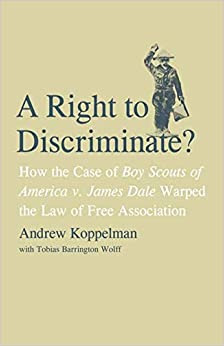
Andrew Koppelman and Tobias Barrington Wolff, A Right to Discriminate?: How the Case of Boy Scouts of America v. James Dale Warped the Law of Free Association (Yale University Press 2009)

Jack M. Balkin and Reva B. Siegel, The Constitution in 2020 (Oxford University Press 2009)
Heather K. Gerken, The Democracy Index: Why Our Election System Is Failing and How to Fix It (Princeton University Press 2009)

Mary Dudziak, Exporting American Dreams: Thurgood Marshall's African Journey (Oxford University Press 2008)

David Luban, Legal Ethics and Human Dignity (Cambridge Univ. Press 2007)

Ian Ayres, Super Crunchers: Why Thinking-By-Numbers is the New Way to be Smart (Bantam 2007)

Jack M. Balkin, James Grimmelmann, Eddan Katz, Nimrod Kozlovski, Shlomit Wagman and Tal Zarsky, eds., Cybercrime: Digital Cops in a Networked Environment (N.Y.U. Press 2007)

Jack M. Balkin and Beth Simone Noveck, The State of Play: Law, Games, and Virtual Worlds (N.Y.U. Press 2006)

Andrew Koppelman, Same Sex, Different States: When Same-Sex Marriages Cross State Lines (Yale University Press 2006)
Brian Tamanaha, Law as a Means to an End (Cambridge University Press 2006)
Sanford Levinson, Our Undemocratic Constitution (Oxford University Press 2006)
Mark Graber, Dred Scott and the Problem of Constitutional Evil (Cambridge University Press 2006)
Jack M. Balkin, ed., What Roe v. Wade Should Have Said (N.Y.U. Press 2005)
Sanford Levinson, ed., Torture: A Collection (Oxford University Press 2004)
Balkin.com homepage
Bibliography
Conlaw.net
Cultural Software
Writings
Opeds
The Information Society Project
BrownvBoard.com
Useful Links
Syllabi and Exams